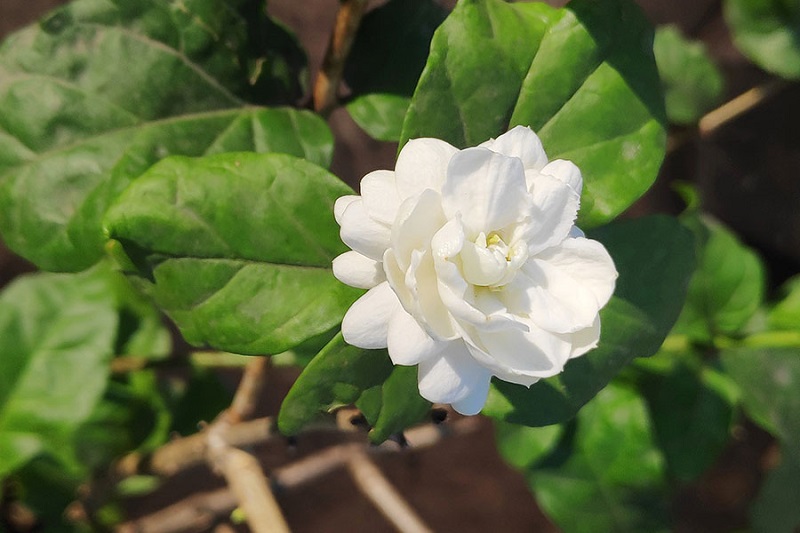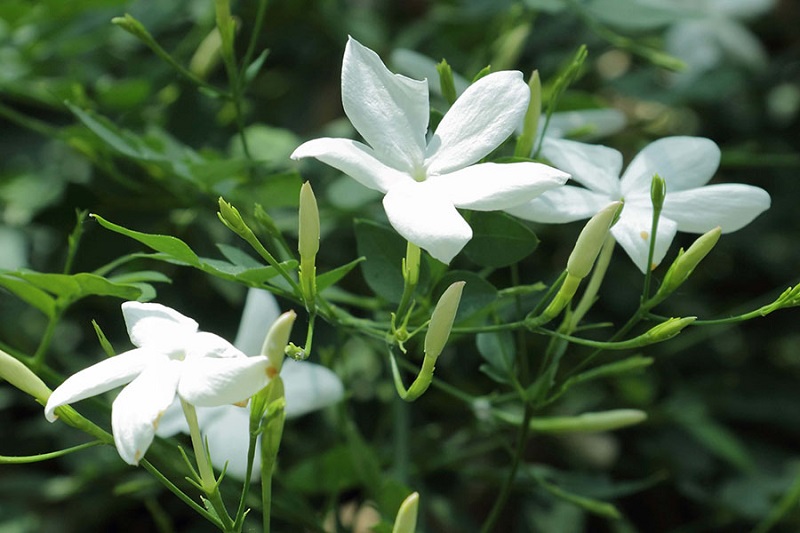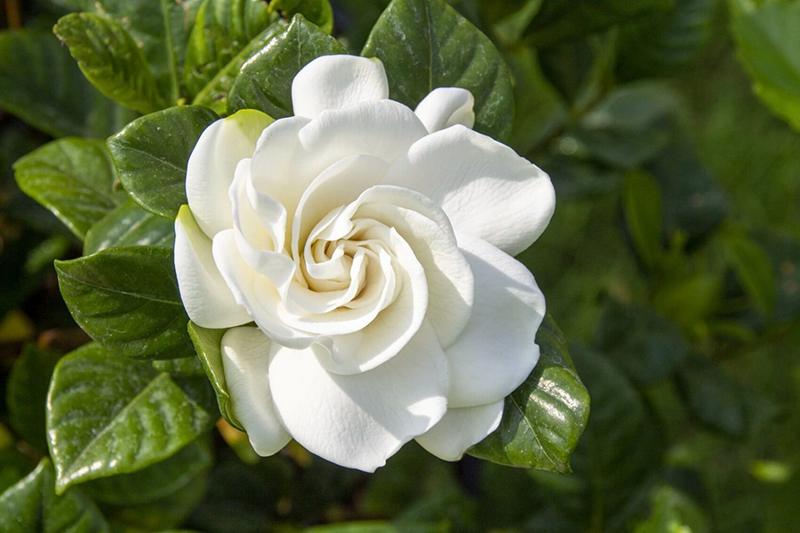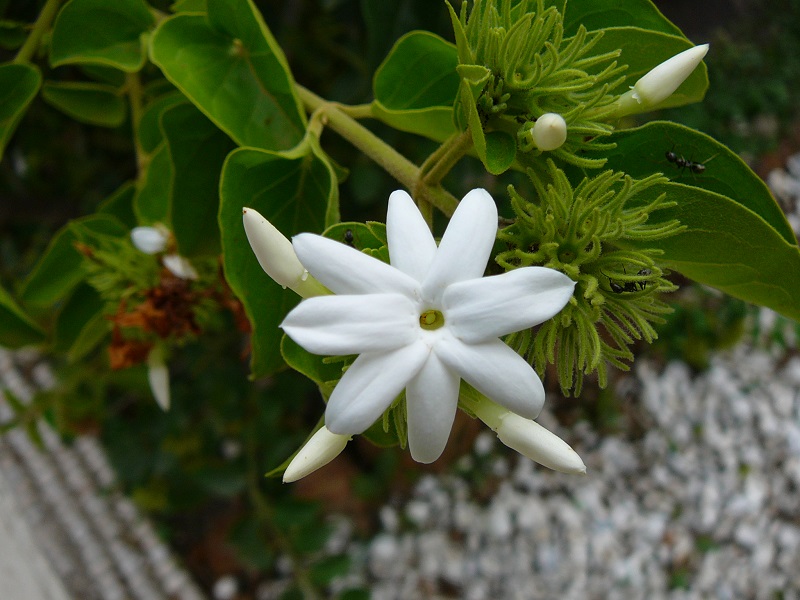Jasminum sambac, commonly known as Arabian Jasmine, is renowned for its captivating beauty and enchanting fragrance. This evergreen shrub, native to Southeast Asia, has been cherished for centuries in gardens and cultural practices. Its delicate white flowers and lush foliage make it a popular choice for gardeners and horticulturists alike. This comprehensive guide delves into […]
Jasmine
Jasmine, with its delicate blooms and enchanting fragrance, is one of the most cherished plants in gardens and landscapes around the world. This versatile plant, known for its beauty and aromatic qualities, has been celebrated in cultures and gardens for centuries. In this comprehensive guide, we explore the fascinating world of jasmine, covering its botanical characteristics, cultivation needs, and cultural significance.
Botanical Characteristics
Jasmine belongs to the genus Jasminum, which encompasses a diverse range of species, both vining and shrubby. These plants are admired for their exquisite flowers and pleasant aroma.
- Plant Description
- Types of Jasmine Plants: Jasmine plants can be categorized into shrubs and vines. Shrubby varieties, like Jasminum sambac, grow as compact bushes, while vining types, such as Jasminum polyanthum, are known for their climbing or sprawling growth habit.
- Leaf Structure: Jasmine leaves vary in shape and color depending on the species. They typically have a dark green color and are arranged alternately on the stems. The leaves may be simple or compound, depending on the plant variety.
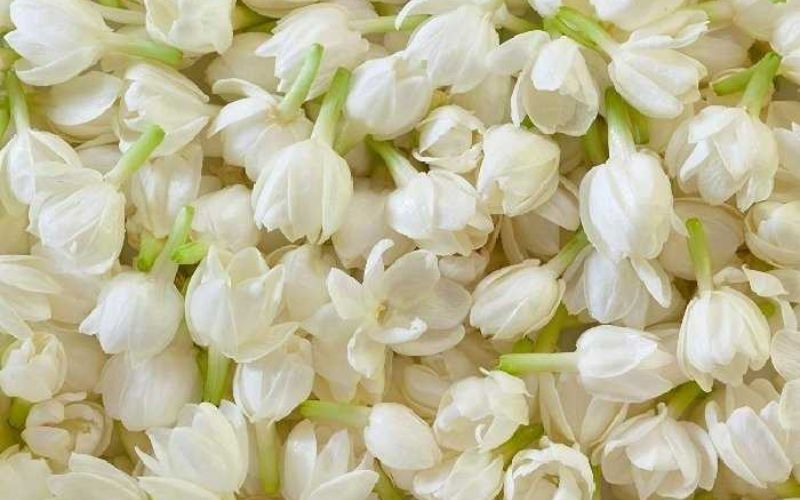
- Flowers
- Flower Structure: Jasmine flowers are renowned for their beauty and fragrance. They generally have five to nine petals arranged in a star-like shape. Flower colors vary from white and yellow to pink, depending on the species.
- Fragrance: The scent of jasmine is one of its most attractive features. It ranges from light and sweet to intense and heady, making it a favorite in perfumery and aromatherapy.
- Growth Conditions
- Soil Requirements: Jasmine thrives in well-draining soil with a slightly acidic to neutral pH. While it is adaptable, it prefers rich, loamy soil that retains moisture without becoming waterlogged.
- Light and Temperature: Most jasmine species prefer full sun to partial shade. They are generally tolerant of a range of temperatures but grow best in mild to warm climates. Some varieties can withstand frost, while others need protection from cold temperatures.
- Watering and Fertilization: Jasmine requires regular watering, particularly during dry periods. However, it should not be overwatered. A balanced, all-purpose fertilizer applied during the growing season helps promote healthy growth and abundant flowering.
Cultivation and Care
- Planting
- Best Planting Time: Jasmine is best planted in the spring or fall, allowing the plant to establish itself before the extremes of summer or winter.
- Planting Depth and Spacing: Plant jasmine at the same depth it was growing in its nursery pot. Space plants adequately to ensure good air circulation and to allow for their mature size.
- Growth and Maintenance
- Pruning and Training: Pruning is essential for maintaining the shape of jasmine plants and encouraging new growth. For vining varieties, regular pruning helps manage their spread and promotes better flowering. Shrubs benefit from occasional trimming to maintain their form and remove spent flowers.
- Pest and Disease Management: Jasmine plants can be susceptible to pests such as aphids, spider mites, and whiteflies. Common diseases include fungal infections like powdery mildew and root rot. Regular inspection and appropriate treatments can help manage these issues effectively.
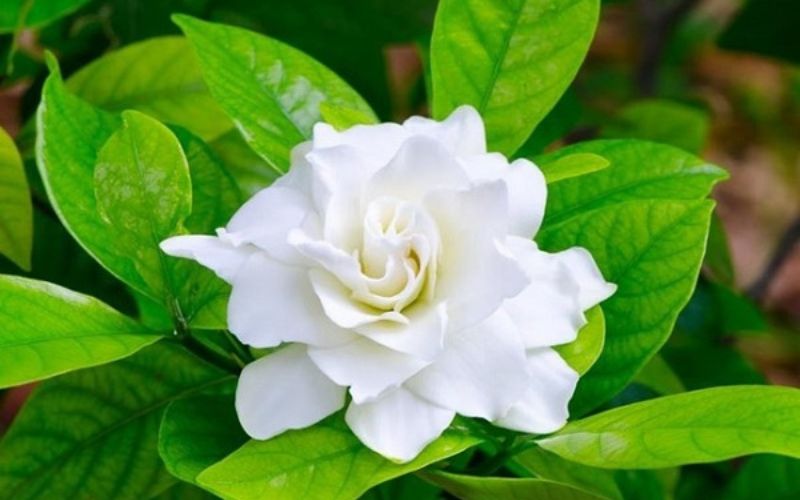
Seasonal Care
- Spring and Summer
- Maintenance: During these growing seasons, ensure jasmine receives adequate water and nutrients. Regular deadheading of spent blooms encourages continued flowering.
- Fall and Winter
- Preparation: In cooler climates, protect jasmine from frost by mulching around the base or moving container plants to a sheltered location. In milder climates, jasmine typically requires minimal additional care during winter.
Uses and Cultural Significance
Jasmine has a wide range of applications beyond its ornamental value.
- In Gardens: Jasmine is often used as a climbing plant on trellises, arbors, or fences. Its aromatic flowers make it a popular choice for creating scented garden spaces.
- In Perfumery: Jasmine oil is a key ingredient in many perfumes, valued for its rich, sweet fragrance. It is also used in aromatherapy for its calming and uplifting properties.
- In Culinary Uses: Some jasmine varieties, such as Jasminum sambac, are used to flavor teas and other culinary dishes, particularly in Asian cuisines.
Conclusion
Jasmine, with its exquisite blooms and intoxicating fragrance, adds beauty and charm to any garden or indoor space. Understanding its botanical characteristics, cultivation needs, and cultural significance allows gardeners and plant enthusiasts to fully appreciate and care for this remarkable plant. Whether you are growing jasmine for its decorative appeal, its scent, or its practical uses, it remains a beloved choice for enhancing any environment with elegance and grace.
Jasminum officinale, commonly known as the common jasmine or poet’s jasmine, is a striking and versatile plant celebrated for its fragrant flowers and ornamental beauty. Native to South Asia but now cultivated worldwide, this species belongs to the olive family (Oleaceae) and is renowned for its role in gardens, perfumery, and traditional medicine. This article […]
Jasminum grandiflorum, also known as the Grand Duke of Tuscany jasmine or Spanish jasmine, is a cherished species in the world of ornamental plants and perfumery. Native to the Mediterranean region, this climbing vine or shrub is renowned for its large, fragrant white flowers and its ability to elevate any garden or indoor space with […]
Jasminum nudiflorum, commonly known as Winter Jasmine, is a remarkable deciduous shrub celebrated for its vibrant yellow flowers that bloom during the winter months. Originating from China, this hardy plant offers a splash of color when many other plants are dormant. Its early flowering period, ease of care, and versatility make it a popular choice […]

